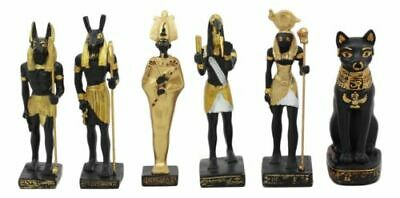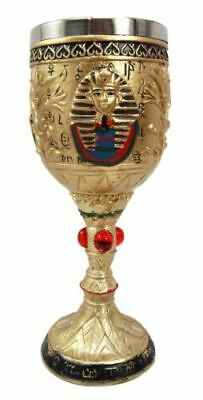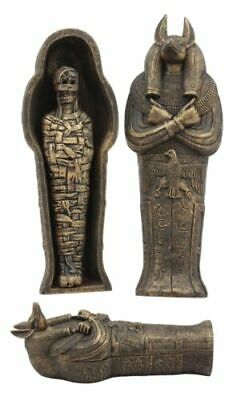-40%
Ushabti statues of servants, ancient civilization of Egypt
$ 41.7
- Description
- Size Guide
Description
Ushabti (English: Ushabti) or Ojibti are mummy-like statues that were placed in ancient Egyptian tombs with features similar to the features of the deceased (the owner of the tomb). They were made of stone, faience, wood, or bronze, and sometimes from burnt clay.The word Ushabti is derived from the ancient Egyptian verb (and Shab) meaning to answer or to respond, hence the name Oshabti statues meaning "respondents". Religious texts were recorded on them in stages in the history of ancient Egypt as a kind of symbolic service linked to the beliefs of the ancient Egyptians, starting with the Middle Kingdom. Served him and his wife. [1]
The situation of the "respondents" began with the dead pharaohs, princes and great leaders, beginning in the ancient Egyptian kingdom (circa 2600 - 2100 BC) and were in the form of life-size heads made of colored limestone. [2] It was still placed in the graves of the dead, but over time it took the shape of the whole body, but in the form of small statues. Therefore, these statues were sometimes depicted, with a wicker plucked back on them and an ax. Texts from the Book of the Dead recorded on statues indicate this role. They began in the Middle Kingdom by placing one statue, and then it reached 403 during the era of the New Egyptian Kingdom (1470-1070 BC). It does not include only one statue of the owner of the cemetery, but statues similar to him that are sufficient for the days of the whole year and also contain statues of scribes, presidents and supervisors (Osir). In recent times, wooden boxes were found with large numbers, which reached about 700 Ushabti. The most beautiful examples found by Tutankhamun's groups indicate the belief that the Ashbti included the kings and the rest of the parish as part of the belief in the justice of Osiris, who assigned the king to work in the fields like his flock.

















